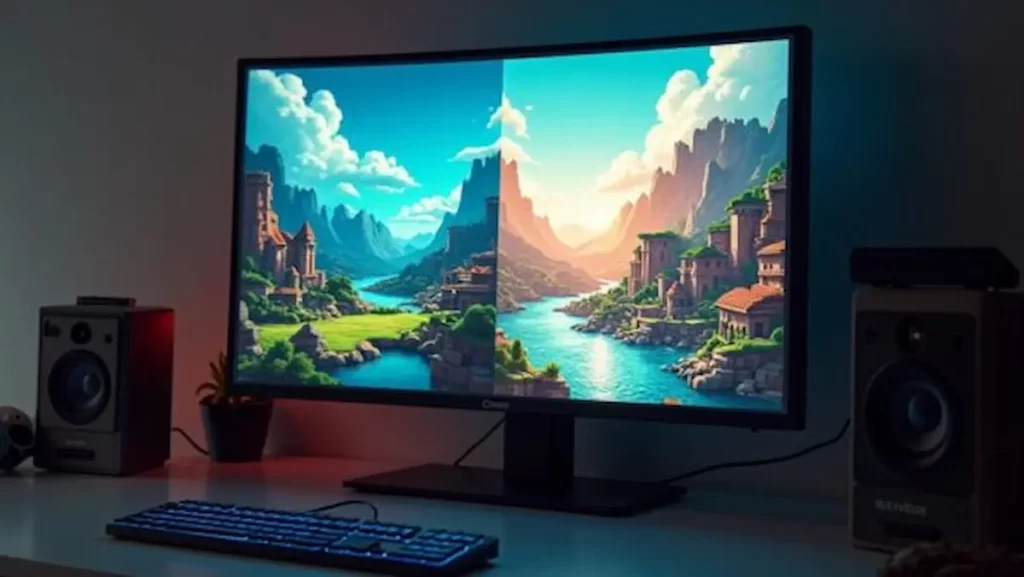
Cosplay and gaming: a culture that transcends the screen
Cosplay and gaming cultures connect creativity, community, and identity in ways that transcend mere entertainment, revealing deeper stories yet to be uncovered.


Gaming graphics have come a long way. From pixelated beginnings to lifelike worlds, each leap in technology has reshaped how players see and experience games. What started with basic shapes and limited colors has grown into cinematic environments that blur the line between reality and imagination.

But the journey doesn’t stop here, the evolution of gaming graphics is still unfolding, and the next chapter may change how we play all over again.
Although primitive by today’s standards, the 8-bit and 16-bit graphics era laid the groundwork for modern games.
During this time, developers relied on sprite animation and pixel art to bring characters and worlds to life, even with limited colors and resolution.
These classic games introduced powerful visual storytelling techniques, shaping how games communicate actions and emotions despite hardware limits.
For fans of retro games, this era still inspires today’s indie games, proving that strong design can outlast technology.
The 1990s marked a pivotal shift in video games with the rise of 3D graphics. Thanks to polygon modeling, developers could build complex, three-dimensional worlds and characters that felt more realistic than ever.
Texture mapping added detailed surfaces to these models, making environments in 3D graphics look richer and more immersive.
This move from flat sprites to fully realized spaces revolutionized gameplay, set the stage for modern visuals, and cemented 3D graphics as a core pillar of gaming’s evolution.
Advancements in real-time rendering techniques have transformed how games look and feel, bringing players closer to cinematic visuals during actual gameplay.
Real-time rendering techniques like dynamic lighting, shadow mapping, and shader programming help developers create detailed worlds with convincing materials and physics.
The impact of hardware improvements on visual fidelity is transforming how we experience games.
As GPUs become more powerful and memory gets faster, developers can push visual fidelity with higher-resolution textures, advanced lighting, and realistic effects.
This leap in visual fidelity delivers richer, more immersive game worlds that edge closer to photorealism, all while keeping performance smooth for players across a wide range of devices.
Artistic direction in game design shapes the visual identity and emotional tone of a game, guiding every aesthetic choice from color palettes to character design.
In game design, artistic direction integrates diverse artistic styles to support visual storytelling, creating immersive worlds that connect with players on an emotional level.
This deliberate approach ensures that, in game design, artistic direction aligns graphics with the narrative, setting mood and atmosphere that go beyond technical capabilities.
In modern gaming, photorealism influences player immersion by creating lifelike environments that feel authentic and emotionally engaging. When visuals mirror reality, photorealism helps players connect with characters and stories, making every scene more impactful.
As a result, photorealism in gaming bridges the gap between digital worlds and human perception, delivering deeper immersion and a more compelling gameplay experience.
Where will gaming graphics evolve next? Thanks to AI-generated textures, gaming graphics are set to deliver more detailed, realistic environments with less manual work for artists.
When combined with advanced dynamic lighting, gaming graphics can produce lifelike shadows, reflections, and global illumination that react in real time.
These innovations will boost immersion and optimize performance across platforms, ensuring gaming graphics continue to set new standards for visual quality in next-gen games.
Gaming graphics have come a long way, evolving from simple 8-bit sprites to stunning, lifelike worlds. As consoles and PCs improved, so did gaming graphics, with better hardware and smarter rendering techniques boosting realism and immersion. Creative direction remains just as important, guiding how gaming graphics turn technical power into memorable art. Looking ahead, AI and real-time ray tracing will continue to reshape gaming graphics, pushing visual quality, performance, and storytelling to new heights in the world of games.

Cosplay and gaming cultures connect creativity, community, and identity in ways that transcend mere entertainment, revealing deeper stories yet to be uncovered.

From heartbreaking goodbyes to unexpected sacrifices, discover the most emotional endings in gaming history that will stay with you long after the screen fades.

Brilliantly blending fiction with foresight, these video games predicted future realities in ways that will leave you questioning what’s next for our world.

Surprising crossovers in video games blend unlikely characters and worlds, creating unforgettable experiences that fans never saw coming but instantly adored.

With groundbreaking characters reshaping narratives, discover how female protagonists evolved from side roles to gaming icons in this compelling exploration.

Leveraging interactivity and immersion, storytelling in games transforms narratives—but what truly sets it apart from movies and TV? Discover the difference inside.